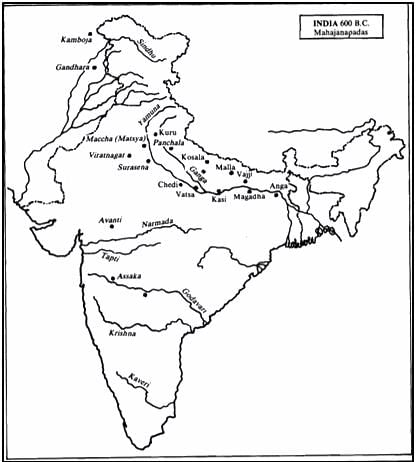MH SET Paper 2 Mock Test - 3 (History) - MAHA TET MCQ
30 Questions MCQ Test MH SET Mock Test Series 2025 - MH SET Paper 2 Mock Test - 3 (History)
Which of the following statements is incorrect?
“Kings are made for Public; Public is not made for the King”. Who among the following made this statement during the national movement?
In which of the following years was the Battle of Khurbura fought?
What is the descending order of military cavalry composition according to Barni?
1. Sarkhel
2. Sipahsalar
3. Amir
4. Malik
Which of the following Vedas contains the famous Gayatri - Mantra ?
Which of the following statements are correct regarding the Mahalwari System of land revenue?
- It was introduced in the Ganga valley, the northwest provinces, parts of central India and the Punjab.
- The revenue settlement under this system was done with landlords or heads of families who collectively claimed to be landlords of the village or the estate.
- Under this system, the land revenue was determined on a permanent basis.
Select the correct chronological order using the codes given below:
Consider the following statements with reference to Babur:
- Fought 2nd Panipat war.
- Nobels in Lodi’s court were highly supportive of Babur.
- Rana Sanga helped Babur in the Panipat war.
In the context of pre-Mauryan history, consider the following statements:
1. The Mahajanapada period is referred to as the first urbanisation.
2. During this period, the political centre shifted from Indo-Gangetic plains to lower Ganga valley.
3. The 16 mahajanapadas find reference only in Buddhist scriptures.
4. Among the mahajanapadas, rajyas were monarchies and ganas were republics.
Which of the above statements is/are not correct?
Consider the following statements regarding Natesa, the 9th century’s rare sandstone idol.
1. It is a rare sandstone idol from the Dravidian Style of architecture.
2. It was stolen from a temple in Tamil Nadu and smuggled to the UK.
Which among the above statements is/are correct?
Which of the following states was first to be annexed by Lord Dalhousie under the Doctrine of Lapse?
What was/were the object/objects of Queen Victoria's Proclamation (1858)?
1. To place the Indian administration under the British Crown.
2. To promise equal and impartial protection under the law to all Indians.
3. To regulate the trade of the British East India Company
Select the correct answer using the code given below:
Which of the following statements is/are incorrect about Prabhavati Gupta?
1. She was the daughter of Chandragupta I.
2. She married Vakataka king Rudrasena II.
3. She took over as queen after the sudden death of her husband.
Who headed the Sadar Nizamat Adalat at Calcutta established under Warren Hastings Plan of 1772?
Sir Charles Napier replaced which of the following as the British resident of Sindh?
Consider the following statements:
1. The three early kingdoms of south India, Chera, Chola, and Pandya are mentioned in the Ashokan inscriptions.
2. The kingdoms had their own emblems like carp for the Pandyas, tiger for the Cholas and bow for the Cheras.
3. The kingdoms were famous for their chief crops like pepper in Chera country while paddy in Chola and Pandya countries.
Which of the statements given above are correct?
Who was the leader of Tana Bhagat Movement?
Consider the following pairs about Mughal Administration

Which of the pairs given above is/are correctly matched?
Louis Fischer, the biographer of Mahatma Gandhi, was associated with the movement of-
Who among the following Generals has also been called “Heaven Born General”?
Consider the following statements.
1) Palaeolithic sites are found in the alluvial plains of the Indus and the Ganga.
2) It was absent in hilly slopes and river valleys of the country.
Choose the correct statements.
'Chachnama' is a famous work on the History of
Who formed the “Indian Parliamentary Committee” along with Dadabhai Naoroji?
Consider the following statements:
Assertion(A):- The Santhals were given land and persuaded to settle in the foothills of Rajmahal by the 18th century.
Reason(R):- They initially refused to cut forest, resisted touching the plough, and continued to be turbulent.
|
60 tests
|
















